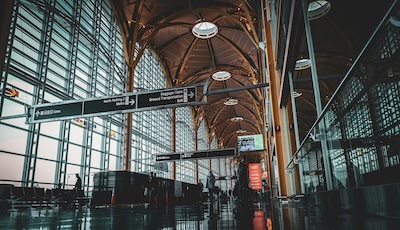Late on March 22nd, Ireland’s Minister for Foreign Affairs, Simon Coveney, tweeted "This decision is regrettable & contrary to the approach that U.K. and Irish Governments have supported for many years to protect free movement on the Island of Ireland for everyone”. The decision being referred to was that of Westminster MPs to vote down a proposed House of Lords amendment to the Nationality and Borders Bill—currently in its final stages in the Houses of Parliament.
The bill determines, among other things, the conditions under which the UK will introduce an Electronic Travel Authorisation (eTA) in 2024. If passed, this law will require visa-exempt citizens to obtain electronic clearance before being allowed to travel to the UK. Somewhat controversially, the bill requires non-British and non-Irish citizens who do not have immigration status in the UK to obtain an eTA before crossing the border from Ireland into Northern Ireland. This detail is what the proposed House of Lords amendment was seeking to avoid.
Of course, citizens of Ireland are already exempted from obtaining an eTA under the terms of the common travel area that Ireland shares with the UK. An open border without checks is seen by many to be central to maintaining peaceful relations on the island of Ireland.
But the exemption will not apply to citizens of other countries, including those of the EU. Once the UK eTA is implemented, all EU passport holders (with the exception of Ireland) who do not have immigration status in the UK will require an eTA to travel to the UK.
So why did Mr. Coveney react in the way that he did? How does the decision affect free movement on the island of Ireland?
The decision not to exempt travel from Ireland to Northern Ireland means that non-British and non-Irish residents of Ireland who do not have immigration status in the UK will no longer be permitted to move freely across the border with Northern Ireland in the way that they currently can.
Today there are no physical checks on the border when travelling in either direction, and the British government has stated that the introduction of the eTA will not change this fact, regardless of traveller citizenship. But Dublin is concerned that the free movement north of the border of some Irish residents for work, leisure, shopping or any other reason will be restricted by the new rules.
Tourism industry sources are also concerned about the implications of the eTA. International visitors to Ireland currently enjoy unrestricted movement between the Republic of Ireland and Northern Ireland. Niall Gibbons, Tourism Ireland’s CEO, said recently that two-thirds of visitors to Northern Ireland from North America and mainland Europe come via the Republic.
The UK’s intention to introduce an eTA should come as no surprise. Governments around the world have been following the example set by Australia in 1996 when they introduced the world’s first eTA. Since then, programs have been established by governments in USA, Canada, South Korea, India, Turkey and New Zealand amongst others. The European Union will introduce an eTA called ETIAS in 2023.
eTAs are increasingly integral to the cross-border travel experience. Companies like sherpa° work with airlines and travel providers to ensure that the implementation of an eTA is not an impediment to travel. Travel companies are increasingly proactive about informing travellers on eTAs and guiding them through the process of securing one.
The reality of applying for a modern eTA is that it is generally quick and easy—and the UK eTA will be no different. Applications will be completed online in minutes. Once approved, any traveller crossing the border into Northern Ireland will be fully compliant with the new rules and will be free to do so as many times as they want for the duration of the authorization—usually a number of years.
The border between Northern Ireland and the Republic of Ireland is unique. There are estimated to be more than 300 road crossings along the 500-kilometer border. Famously, some roads traverse the border several times between two points. And the obvious sensitivities surrounding this border and what it means to the people on either side are not to be taken lightly.
Governments are increasingly seeking better information on the people that are planning to travel to their country, and we should not expect this trend to slow. Constructive engagement and creative technologies are key to ensuring that new travel documentation requirements are not detrimental to tourism, or indeed to the everyday lives of people that today enjoy unhindered cross-border travel.








